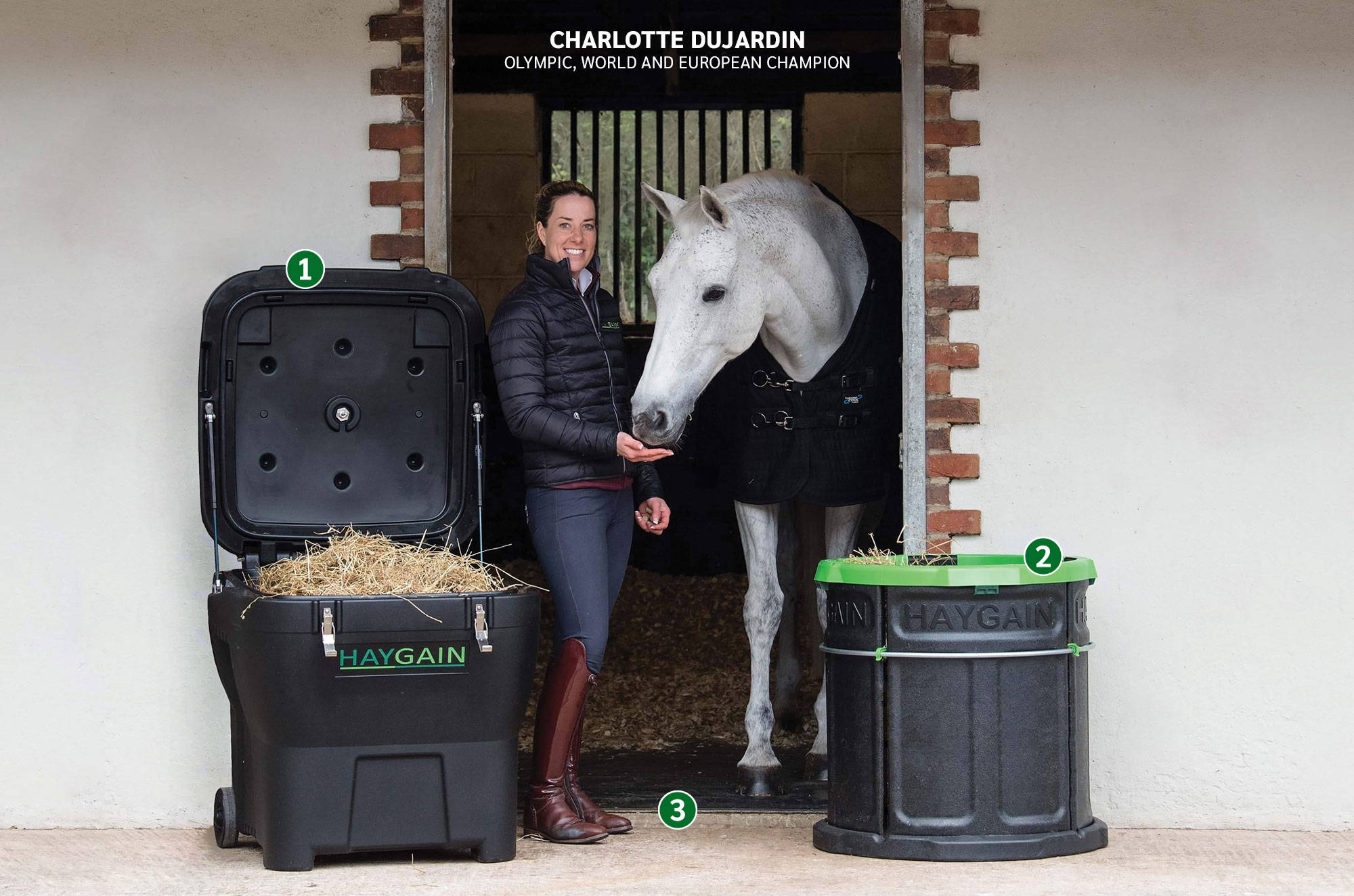
by Kim F Miller
Healthy horse management requires extra consideration in the cold season.
For non-horse owners, the fall and winter seasons may conjure cozy images of fireside hot cocoa while enjoying the great indoors. Horse owners, however, know that cold weather means more time in indoor stabling and its drawbacks for their horse's health.
To start with, exposure to inhalable irritants increases by 50 percent compared to living outdoors. Respirable irritants are the main cause of conditions on the Equine Asthma Spectrum that affect over 80 percent of active sporthorses, often without obvious symptoms.
Dehydration and related impaction colic, and boredom behaviors are additional downsides to the not-so-great indoors for horses.
Starting with respiratory health, some horses have a genetic predisposition for Equine Asthma, but otherwise it's an occupational disease, explains sporthorse veterinarian Emmanuelle Van Erck-Westergren, DVM, PhD, ECEIM. "Environment, stresses of training and competition which can lower immunity, and mingling with other horses, are all risk factors for Equine Asthma."
The good news is that our horses' environment is something horse owners can control or, at least, significantly improve by reducing these risk factors.
"Sick Building?"
"Dust" is the innocent sounding description for the main causes of asthma. There's the dust you can see, and the dust you can't see -- under 5 microns in size and invisible without a microscope. Horses' natural respiratory defense mechanisms can usually handle larger particles. It's the invisible particles that pose the greatest risk because they can evade these defenses and deliver tiny bits of mold, bacteria and other irritants and allergens deep into the lungs.
Unfortunately, even a meticulously maintained yard has loads of microscopic irritants, much of them from forage. That's true even when the forage has high nutrient value and looks and smells fresh and clean to a knowledgeable horseman.
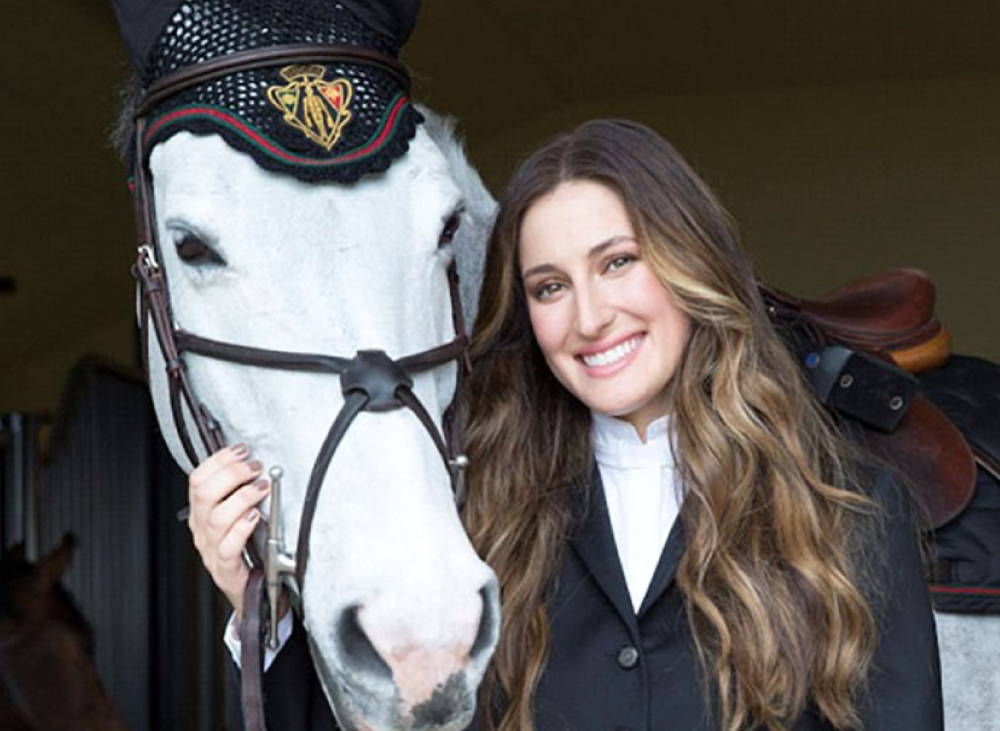
That's why Dr. Van Erck-Westergren includes barn visits in caring for her patients, many of whom are referred for further study when respiratory challenges persist after traditional treatments.
"I look at the horse and his environment," explains the partner in the Equine Sports Medicine Practice in Waterloo, Belgium. "We do measurements of dust levels and samples of contaminants. Some are easy to see. Have you seen someone sweep dust from the barn aisle, then stash that in the horse's stall? Or seen mold stains on barn walls or ceilings?"
Or, the pet peeve of Dr. Van Erck-Westergren and many of her colleagues: blowers in the barn aisle that stir dust up into the horse's breathing zone?
"A condition called Sick Building Syndrome exists in human medicine and it can apply to horses, too," she continues. "They may not be coughing or having nasal discharge, but they clearly don't feel well. That can often be linked to the amount of contaminants growing inside the building.
"Horses were designed to live outside, but many horses spend 23 hours a day in the barn. Living inside, they're exposed to 50 times more inhalable irritants! Even if they live outside, if they're getting hay with contaminants, it's still a problem."
Preventative Measures
"Assess and improve your horse's environment," Dr Van Erck-Westergren asserts, offering these four tips for horse owners:
1. Make sure there's ventilation in the barn. That means circulation and renewal of the air. If there's no renewal, moisture will accumulate and foster contaminant growth. Cobwebs indicate there isn't enough ventilation because spiders won't make them where there's any breeze.
2. Reduce dust: the fine dust that can be inhaled and lodge in the airways and deep in the lungs.
3. Look for signs of mold on walls, everywhere and especially on walls near stored hay.
4. Look at floor mats: specifically, what is growing between and underneath them. Urine accumulation can make it really dangerous and gross. It's awful for horses and people. Stables don't have to be sterile, but they do need to be clean.
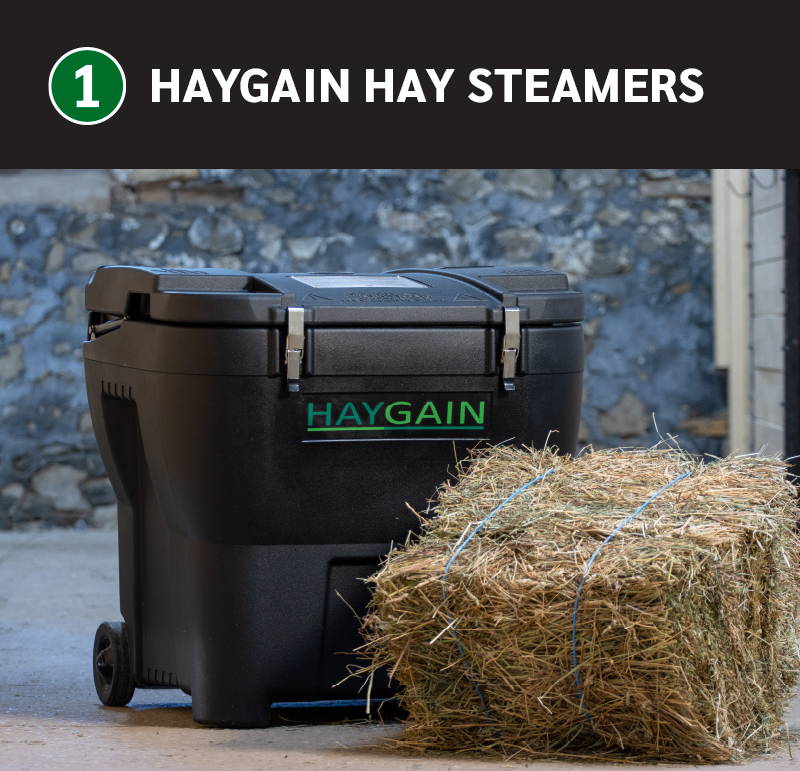
Hay & Bedding
Two ubiquitous stable elements, forage and bedding, are major contributors to conditions on the Equine Asthma Spectrum, which ranges from mild, reversible Inflammatory Airway Disease to Severe Equine Asthma that's gone so far it can only be managed, not cured.
Dr. Westergren "strongly advises" all her clients to get a Haygain High Temperature Hay Steamer because it reduces up to 99% of the fine, respirable particles and kills mold, bacteria and yeast in hay. Ample scientific studies demonstrate the benefits of killing the mold that cause irritation and inflammation in the respiratory system.
"When it comes to preventative medicine, high-temperature steaming is something that speaks for itself over time," she continues. "That's why you don't see many Haygain Hay Steamers for sale second-hand. Once horse owners adopt it, they don't go back."
As for bedding, first consider flooring that can be disinfected. ComfortStall Sealed Orthopedic Flooring, by Haygain, is an ideal option that comes with built-in cushion so that bedding is only needed to absorb urine. Less bedding equals less respirable dust.
For what bedding is needed, wood shavings are good because they contain terpene, a natural anti-septic. Cardboard and paper shavings are cleaner options. Straw, however, can foster bacteria and fungal growth.
Hydration
Although hydration is often associated with hot-weather horsekeeping, it's equally important in the cold season. Colic is the most common non-infectious health risk for horses and the form most often seen in winter is impaction colic.
Decreased water consumption is the most common culprit and it's the worst in cold weather because horses often drink less. A study conducted at the University of Pennsylvania showed that horses drank more water if it was heated to 66°F, but only if that warmed water was the only source. If there was cold water available, too, the horses drank mostly from that chilled source, but consumed less water overall. The ideal was a single source of warm water.
Most importantly, horses intake the majority of their water within three hours of eating. Providing adequate quantities available in that window is key. An average 1200-pound horse drinks seven to 10 gallons of water a day. That varies with activity and it's helpful to monitor intake and know your horse's baseline. The indoor lifestyle often leads to more forage consumption, which requires more water consumption to facilitate digestion.
In-the-stable mineral blocks and oral electrolytes can help prompt thirst in many horses. Haygain Steamed Hay can help because the High Temperature Steaming process increases the water content in forage by as much as three times.
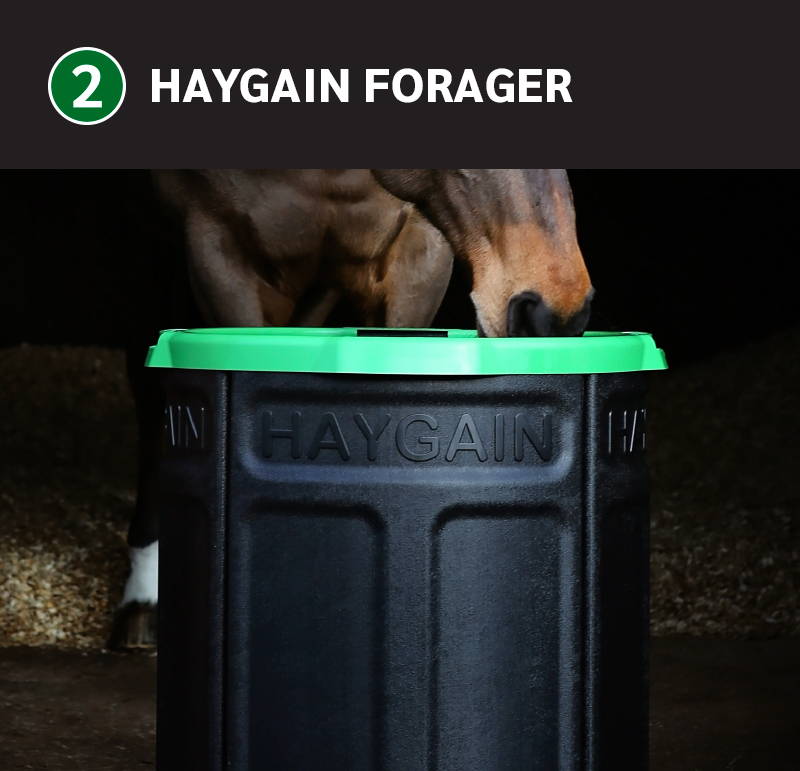
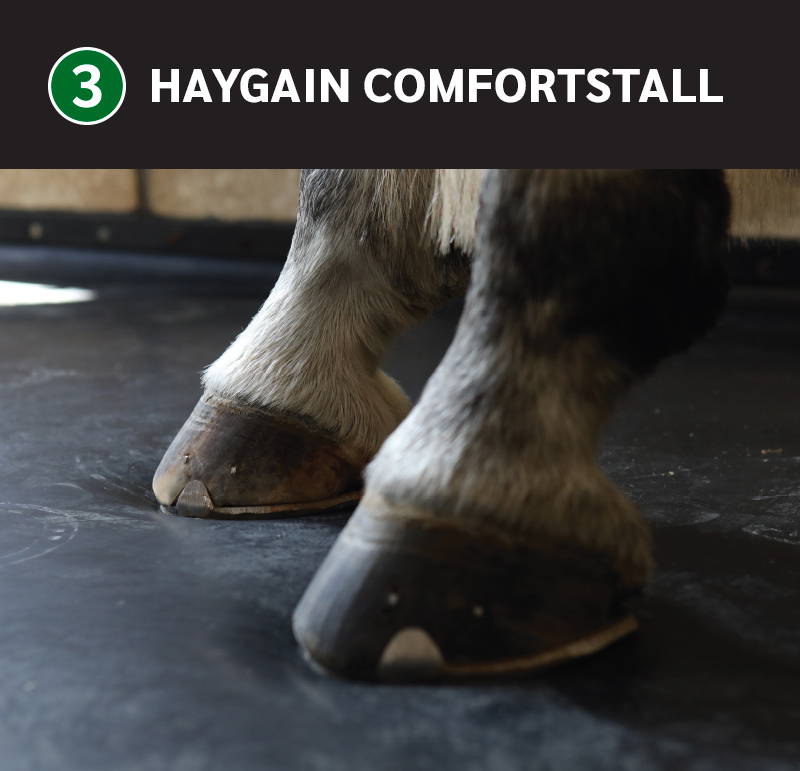
Boredom Behaviors & Weight Gain
Stable confinement can make for long, dull days and nights. Eating is a nice way to pass the time, but if not regulated it can lead to weight gain. Horses' digestive systems were designed to graze -- eating small quantiles spread over many hours of the day but modern stabled life and twice or thrice-daily feeding practices don't lend themselves to Mother Nature's design.
Hay nets are a popular way to slow down horse's consumption time, but they often frustrate the horse and can be quickly rendered ineffective by a food-aggressive horse. Hung on the stable wall, hay nets require the horse to hold its head and neck in an unnatural position.
Haygain considered these realities when designing The Forager Slow Feeder. The sturdy cylinder lets the horse eat with its head in the natural, lowered position, which facilitates drainage of particles from the upper respiratory tract and maintains the natural interaction between musculoskeletal structures in the back, neck and jaw.
The regulator grid sits securely atop the hay, with openings through which the horse pulls small bites of forage, simulating grazing behavior. Held level by a ring outside the cylinder, the grid lowers as the horse slowly and contentedly consumes his meal. More chewing produces more saliva which buffers the stomach lining from naturally occurring acids and helps reduce ulcer risk. Longer mealtimes can help reduce pawing, pacing, cribbing and other boredom behaviors.
Used alone or, ideally, together, The Haygain Way line of horse health equipment -- Hay Steamers, The Forager Slow Feeder and ComfortStall -- helps maintain happy, healthy horses whatever the weather and indoors or out.
This article originally appeared on Haygain and is published here with permission.
There are more informative articles in our section on Tack & Farm and Health & Education.
































